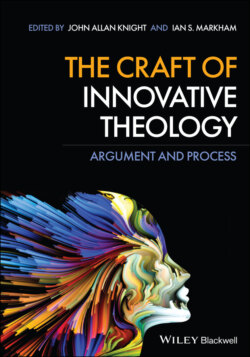Читать книгу The Craft of Innovative Theology - Группа авторов - Страница 33
Radical Flexibility: The Principle of Indeterminism
ОглавлениеI expect some may be rather queasy about the skeptical trajectory of the principle of fallibilism just described. If we must resist the drive toward certain knowledge and conviction, maintaining, rather, that when all is said and done we might be significantly wrong about central beliefs and practices of a tradition, then in what sense could we hold religious beliefs and practices to be true? Surely, contends the critic, even a theology thoroughly inflected by the facts of religious plurality must have some criteria of justifiable belief? Pushed too far, does not the principle of fallibilism lead to Pyrrhonian skepticism?
The question of truth in theological discourse is, of course, still much debated, and a thorough discussion of it is beyond the scope of this chapter. However, I suggest that a pluralistic theology of religion must avoid the scylla of a strict correspondence theory of truth, and the charybdis of mere coherence theories, opting, rather, for a pragmatic theory.10 The principle of indeterminism at work here describes a position which maintains that the truth of religious propositions is constructed, negotiated, dynamic, and provisional. Religious truth refers to what particular, historic, and changing religious communities, broadly construed, accept as valuable, constitutive, and trustworthy. “True” is what such communities label the propositions which, generally, work for them; that is, help to deliver the kinds of goods and forms of life commonly valued by those communities. For pluralistic theology, religious truth cannot be fixed forever in objective certitude, for, as Kierkegaard reminds us, objective facts per se do not impinge on our lives. Facts about the universe must be appropriated subjectively in order to have meaning for us.
In his journal of 1835 Kierkegaard writes (see Box 1.7):
Box 1.7
In this description of the second characteristic notice how he goes back to the original sources when outlining the views of Kierkegaard. He does not draw on secondary sources, or descriptions of Kierkegaard’s views, but quotes the actual relevant section of Kiekegaard’s journal.
What would be the use of discovering so-called objective truth, of working through all the systems of philosophy and of being able, if required, to review them all and show up the inconsistencies within each system […] what good would it do me if truth stood before me, cold and naked, not caring whether I recognised her or not, and producing in me a shudder of fear rather than a trusting devotion?11
Subjectivity is thus the tell-tale of religious truth, as Kierkegaard makes clear through his definition of truth as an “objective uncertainty held fast in an appropriation process of the most passionate inwardness.”12 However, to function as a general theory of truth, this subjectivity must be tested through negotiation and contestation within the relevant religious communities.13 These negotiated settlements shape subjective truth toward the ends valued by particular communities at particular times and places. Truth is thus at the same time the product of contingent, historical processes while being held fast to subjectivity with the greatest trust. It plays an essential and foundational role in the creation and maintenance of a religious community while at the same time continually arising from and responding to the needs, desires, best practices, and values of that dynamic, interactive community. Religious truth understood pragmatically is a continual work in progress, much as even the most established scientific theories are always provisional. Insofar as religious beliefs and practices continue to be effective in bringing about the forms of life cherished by communities, exemplified in their narratives, performed in their rituals, made relatively more permanent in their institutions, held fast to in subjectivity, they are thereby labeled “true.”
This picture of truth as it pertains to religious statements demonstrates the flexibility and indeterminacy at the heart of a pluralistic theology. The test for such a theology will focus on how the “grammar” of the beliefs and practices of a community facilitate its shared ends and values. Where a question arises as to the truth or legitimacy of a particular belief, doctrine or practice, the final arbiter must be the community itself, and as communities are by nature dynamic, so too will its reflected picture of religious truth. A pluralistic theology cannot be ossified since the negotiation of what counts as “true belief,” i.e. “warranted practice,” will necessarily emerge from contestation, negotiation and provisional acceptance. Within this framework, again, lies an openness to new possibilities and hybrid expression.
